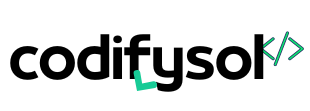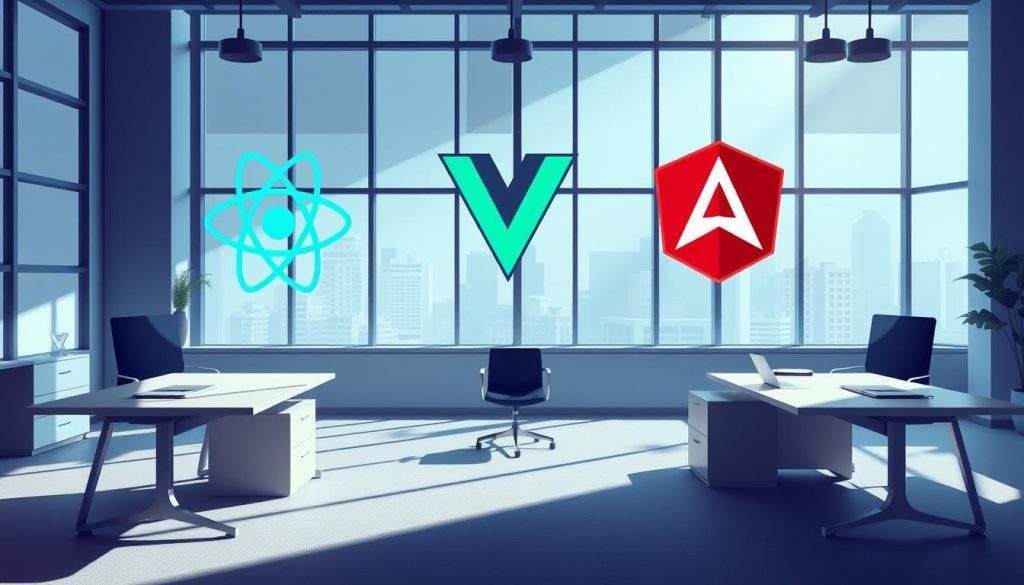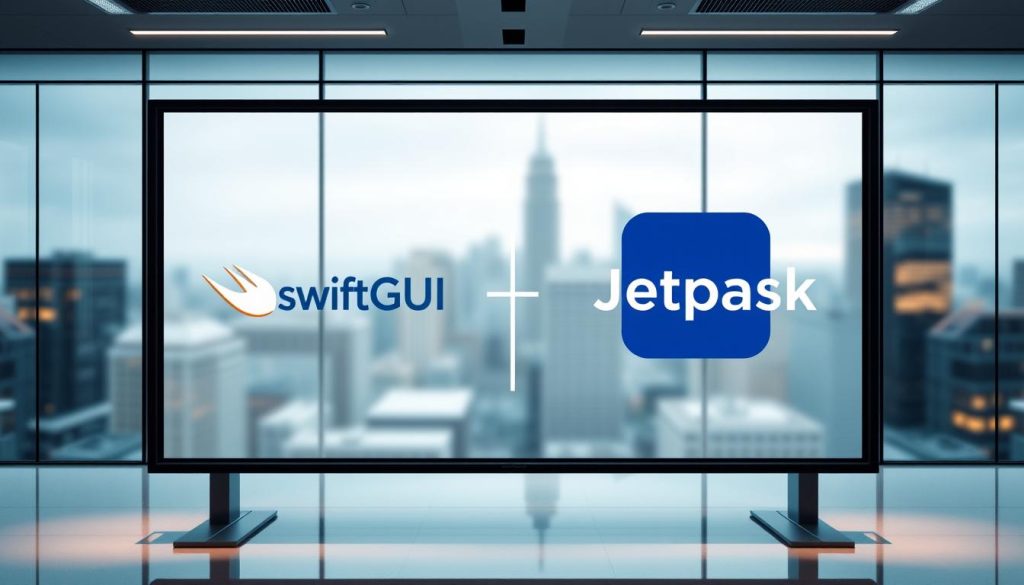Gemini vs GPT-4: Which AI Model is Best for Developers in 2025?
As we step into 2025, the role of AI models in software development continues to grow. Developers are increasingly relying on these models to enhance their productivity and innovation. With several AI models available, choosing the right one can be a daunting task.

The need to select the most suitable AI model is crucial for leveraging the full potential of AI development. This is where the comparison between Gemini AI and GPT-4 becomes significant, as both are prominent AI models for developers.
Key Takeaways
- Understanding the importance of AI models in development.
- Overview of Gemini AI and GPT-4.
- Key differences between Gemini AI and GPT-4.
- Factors to consider when choosing an AI model.
- Implications of AI model choice on development projects.
- Future prospects of AI in software development.
The Current State of AI Models in 2025
As we step into 2025, the landscape of AI models continues to evolve rapidly. The advancements in large language models have been particularly noteworthy, transforming the way developers approach various tasks.
The Evolution of Large Language Models
Large language models have come a long way since their inception. Initially, they were primarily used for simple tasks like text generation and translation. However, with the advent of more sophisticated models, their capabilities have expanded significantly. Today, these models can handle complex tasks such as code generation, multimodal processing, and even conversational AI.
The evolution is not just about increasing the size of the models but also about improving their efficiency and accuracy. This has been achieved through advancements in training methodologies and the availability of larger, more diverse datasets.
Key Advancements Since 2023
Since 2023, there have been several key advancements in AI models. One of the most significant has been the development of more efficient training algorithms, allowing models to be trained on larger datasets in less time. Another important advancement is the improvement in multimodal capabilities, enabling AI models to process and generate not just text, but also images, audio, and video.
| Advancement | Description | Impact on Developers |
|---|---|---|
| Efficient Training Algorithms | Faster training on larger datasets | Reduced development time |
| Multimodal Capabilities | Processing and generating multiple data types | Enhanced application functionality |
| Improved Accuracy | Better performance on complex tasks | Increased reliability |
The Shifting AI Landscape for Developers
The advancements in AI models are significantly changing the landscape for developers. With more powerful and accessible AI tools, developers can now build more sophisticated applications. The increased capabilities of AI models are also opening up new possibilities for innovation, enabling developers to tackle complex problems that were previously unsolvable.
Moreover, the improved accessibility of these models means that developers of all skill levels can leverage AI in their projects, democratizing access to advanced technology.
Understanding Google’s Gemini: Architecture and Capabilities
Gemini, the latest AI model from Google, is revolutionizing the field with its cutting-edge architecture and versatile applications. This section delves into the intricacies of Gemini, exploring its core strengths and the value it brings to developers.
Core Architecture
Gemini’s architecture is designed to be highly efficient and scalable. It leverages advanced machine learning algorithms to process complex data sets with ease. The model’s core is built around a sophisticated neural network that enables it to learn and adapt rapidly.
Multimodal Capabilities
One of Gemini’s standout features is its multimodal capabilities. Unlike traditional AI models that focus on a single modality, Gemini can seamlessly process and integrate multiple forms of data, including text, images, and audio. This allows for more comprehensive and nuanced understanding and generation of content.
Latest Versions and Updates
Google continues to enhance Gemini with regular updates, improving its performance and expanding its capabilities. The latest versions have seen significant advancements in processing speed and accuracy, making it a more reliable tool for developers.
Developer Access Points
Gemini offers various access points for developers, including robust APIs and SDKs. These tools enable developers to integrate Gemini’s capabilities into their applications easily. The following table summarizes the key features available to developers:
| Feature | Description | Benefits |
|---|---|---|
| API Access | Direct integration with Gemini’s capabilities | Enhanced functionality for applications |
| SDKs | Software Development Kits for various platforms | Eases development and integration |
| Documentation | Comprehensive guides and references | Simplifies implementation and troubleshooting |
By understanding Gemini’s architecture and capabilities, developers can unlock new possibilities for their projects, leveraging the model’s advanced features to create innovative and powerful applications.
Exploring OpenAI’s GPT-4: Features and Innovations
OpenAI’s GPT-4 has revolutionized the AI landscape with its advanced capabilities. As the latest iteration of the GPT series, GPT-4 brings significant improvements and innovations that are crucial for developers to understand.
Foundational Technology
GPT-4’s foundational technology is built upon the advancements of its predecessors, with a focus on enhancing scalability and efficiency. This allows for more complex and nuanced AI interactions.
The model’s architecture has been optimized for better performance, enabling it to handle a wider range of tasks with higher accuracy.
Multimodal Processing Abilities
One of the standout features of GPT-4 is its multimodal processing abilities, which enable it to understand and generate not just text, but also other forms of data such as images.
This capability opens up new possibilities for developers to create more interactive and engaging applications.
Recent Enhancements and Versions
Recent updates to GPT-4 have focused on improving its contextual understanding and reducing the instances of inaccuracies or “hallucinations.”
These enhancements make GPT-4 a more reliable tool for developers, who can now leverage its capabilities for critical applications.
Developer Platform Overview
The GPT-4 developer platform provides a comprehensive suite of tools and APIs that allow developers to integrate GPT-4’s capabilities into their applications seamlessly.
With robust documentation and support, developers can quickly get started with building innovative solutions using GPT-4.
As noted by OpenAI, “GPT-4 is a significant step forward in the field of AI, offering unprecedented capabilities for developers and researchers alike.”
“The potential applications of GPT-4 are vast, ranging from content generation to complex problem-solving.”
Technical Performance Comparison
Understanding the technical performance differences between Gemini and GPT-4 is essential for developers in 2025. This comparison will delve into the specifics of processing speed, context window size, accuracy, and other critical factors that influence the choice between these two AI models.
Processing Speed and Efficiency
Processing speed is a crucial aspect of any AI model’s performance. Gemini has been optimized for faster processing, leveraging its advanced architecture to reduce latency. In contrast, GPT-4 has also seen significant improvements in processing efficiency, thanks to enhancements in its underlying technology.
A comparison of their processing speeds reveals that Gemini has a slight edge in handling complex tasks, while GPT-4 excels in straightforward processing tasks.
Context Window Size
The context window size determines how much information an AI model can consider when generating responses. GPT-4 has a larger context window, allowing it to handle more extensive inputs and maintain coherence over longer sequences.
| AI Model | Context Window Size |
|---|---|
| Gemini | Up to 32k tokens |
| GPT-4 | Up to 128k tokens |
Accuracy and Hallucination Rates
Accuracy and hallucination rates are vital metrics for evaluating AI models. Gemini has shown remarkable accuracy in various benchmarks, with a lower hallucination rate compared to its predecessors.
GPT-4 also boasts high accuracy and has implemented measures to reduce hallucinations, making it a reliable choice for developers.
Benchmark Results Across Standard Tests
Both models have been subjected to rigorous testing across standard benchmarks. The results indicate that Gemini performs exceptionally well in multimodal tasks, while GPT-4 excels in natural language understanding.

Handling of Complex Queries
The ability to handle complex queries is a significant differentiator. Gemini has demonstrated an impressive capacity to understand and respond to intricate queries, thanks to its advanced multimodal capabilities.
GPT-4 also handles complex queries effectively, leveraging its large context window and sophisticated processing algorithms.
Gemini vs GPT-4: Which AI Model is Best for Developers in 2025?
With the advancements in AI in 2025, the choice between Gemini and GPT-4 becomes increasingly important for developers. As we dive into the specifics of each model, it becomes clear that the decision hinges on several key factors.
Code Generation Capabilities
Both Gemini and GPT-4 have shown impressive code generation capabilities. Gemini’s architecture allows for more context-aware code suggestions, while GPT-4’s multimodal processing enables it to understand and generate code based on a variety of inputs.
For instance, Gemini can generate boilerplate code for web applications with high accuracy, whereas GPT-4 can create complex algorithms based on natural language descriptions. Choosing between them depends on the specific needs of the project.
Programming Language Support
When it comes to programming language support, both models cover a wide range of languages. Gemini supports over 20 languages, including Python, Java, and C++, while GPT-4 has an equally impressive list, with a notable emphasis on newer languages like Rust and Kotlin.
- Gemini: Python, Java, C++, JavaScript
- GPT-4: Python, Java, C++, Rust, Kotlin
API Flexibility and Documentation
API flexibility is another critical factor. Gemini offers robust API support with comprehensive documentation, making it easier for developers to integrate it into their workflows. GPT-4 also provides flexible APIs, with a focus on ease of use and extensive examples.
As noted by a leading developer, “The documentation for Gemini’s API is top-notch, making it a breeze to get started.” GPT-4’s API is similarly praised for its flexibility and the ability to handle complex queries.
Developer Tools and Ecosystem
The developer tools and ecosystem surrounding both models are rich and varied. Gemini integrates well with popular IDEs like Visual Studio Code, while GPT-4 has strong support for a range of development environments.
For example, Gemini’s integration with GitHub Copilot enhances its code generation capabilities, whereas GPT-4’s support for various CI/CD pipelines makes it versatile for different development workflows.
Learning Curve and Implementation Complexity
Finally, the learning curve and implementation complexity are crucial considerations. Gemini is generally considered to have a more gradual learning curve due to its intuitive API and extensive documentation. GPT-4, while powerful, requires a bit more effort to master, especially for complex use cases.
In conclusion, the choice between Gemini and GPT-4 for developers in 2025 depends on specific project needs, including code generation requirements, API flexibility, and the overall developer ecosystem.
Pricing Models and Accessibility
As developers weigh the benefits of Gemini and GPT-4, understanding their pricing models is crucial for cost-effective decision-making.
The pricing structures of these AI models can significantly impact development costs and scalability. Both Gemini and GPT-4 offer tiered pricing models to accommodate different usage levels and business needs.
Cost Comparison for Different Usage Tiers
Gemini and GPT-4 have different pricing tiers, with costs varying based on the number of requests, computational resources, and additional features. For instance, Gemini offers a free tier with limited requests, while GPT-4 provides a pay-as-you-go model that scales with usage.
Key differences in pricing tiers include:
- Request volume limits
- Computational resource allocation
- Additional features like advanced analytics or priority support
Free Tier Limitations
Both models offer free tiers, but with limitations. Gemini’s free tier is limited to a certain number of requests per day, while GPT-4’s free tier offers a restricted set of features. Understanding these limitations is crucial for developers to plan their projects.
For example, a developer might find that Gemini’s free tier is sufficient for small-scale projects or prototyping, while GPT-4’s pay-as-you-go model is more suitable for large-scale applications.
Enterprise Options and Customization
For enterprise clients, both Gemini and GPT-4 offer customized solutions with dedicated support, enhanced security, and tailored pricing models. These options are particularly beneficial for large organizations with complex AI integration needs.
“Customized enterprise solutions can significantly enhance the ROI of AI adoption by providing tailored support and security features.”
ROI Considerations for Development Teams
When evaluating Gemini and GPT-4, development teams must consider the return on investment (ROI). Factors influencing ROI include development time saved, improved application performance, and the cost of integrating and maintaining the AI models.

By carefully analyzing the pricing models and their implications, developers can make informed decisions that align with their project goals and budget constraints.
Integration Capabilities for Development Environments
As developers increasingly integrate AI into their workflows, the choice between Gemini and GPT-4 hinges on their integration capabilities within development environments.
Framework and Language Support
Both Gemini and GPT-4 offer extensive support for various frameworks and programming languages. Gemini supports a wide range of languages, including Python, Java, and JavaScript, making it versatile for different development needs. GPT-4, on the other hand, has robust support for languages like Python, C++, and TypeScript, with enhanced capabilities for natural language processing tasks.
| Feature | Gemini | GPT-4 |
|---|---|---|
| Language Support | Python, Java, JavaScript | Python, C++, TypeScript |
| Framework Support | TensorFlow, PyTorch | TensorFlow, Keras |
IDE Plugins and Extensions
Integration with Integrated Development Environments (IDEs) is crucial for a seamless development experience. Gemini offers plugins for popular IDEs like Visual Studio Code and IntelliJ IDEA, enhancing code completion and debugging capabilities. GPT-4 also provides extensions for various IDEs, including Visual Studio and PyCharm, with a focus on improving code generation and review processes.
CI/CD Pipeline Integration
Continuous Integration and Continuous Deployment (CI/CD) pipelines are essential for modern development workflows. Gemini can be integrated into CI/CD pipelines using tools like Jenkins and GitLab CI, enabling automated testing and deployment. GPT-4 also supports integration with CI/CD tools, with a focus on automating code review and deployment processes.
Deployment Options and Scalability
Both models offer flexible deployment options, including cloud-based and on-premises deployments. Gemini supports scalable deployments using Kubernetes, while GPT-4 can be deployed using containerization tools like Docker. This flexibility ensures that developers can choose the deployment strategy that best fits their needs.
Security and Authentication Features
Security is a top priority when integrating AI models into development environments. Gemini and GPT-4 both incorporate robust security features, including data encryption and secure authentication mechanisms. Gemini uses OAuth for authentication, while GPT-4 supports API key-based authentication, ensuring that access to these powerful models is securely managed.
Real-World Development Applications
As developers continue to integrate AI into their workflows, understanding the real-world applications of models like Gemini and GPT-4 becomes increasingly important. These AI models are not just theoretical constructs; they are being actively used in various development tasks, from code review to rapid prototyping. In this section, we will explore how Gemini and GPT-4 are being utilized in real-world development scenarios, highlighting their practical applications and benefits.
Automated Code Review and Refactoring
One of the significant applications of Gemini and GPT-4 is in automated code review and refactoring. These AI models can analyze codebases, identify potential issues, and suggest improvements, thereby enhancing code quality and reducing the manual effort required for code reviews.
Key Benefits:
- Improved code quality
- Reduced manual review time
- Enhanced developer productivity
API and Documentation Generation
Gemini and GPT-4 can also be used for generating APIs and documentation. By analyzing code and understanding its functionality, these models can create relevant API documentation, making it easier for developers to understand and use the APIs.
Efficient API documentation is crucial for the adoption and successful integration of APIs. These AI models help in generating clear, concise documentation, thereby facilitating better API usage.
Prototyping and Rapid Development
Prototyping and rapid development are other areas where Gemini and GPT-4 excel. By generating code snippets and boilerplate code, these models enable developers to quickly prototype ideas and develop applications faster.
| Feature | Gemini | GPT-4 |
|---|---|---|
| Code Generation | High-quality code snippets | Versatile code generation |
| Prototyping Speed | Rapid | Very Rapid |
Natural Language to Code Translation
The ability to translate natural language into code is a powerful feature of both Gemini and GPT-4. This capability allows developers to describe what they want to achieve in plain language, and the AI models generate the corresponding code.
Testing and Debugging Assistance
Finally, Gemini and GPT-4 can assist in testing and debugging. By analyzing code and identifying potential bugs, these models can help developers create more robust applications.
Conclusion: Making the Right Choice for Your Development Needs
Choosing the right AI model is crucial for meeting your development needs. After comparing Gemini and GPT-4, it’s clear that both models have their strengths and weaknesses. Gemini excels in multimodal capabilities and has a robust architecture, while GPT-4 offers advanced language processing and a wide range of applications.
When deciding between these AI models, consider your specific development requirements. Evaluate factors such as processing speed, context window size, and accuracy to determine which model best suits your needs. Additionally, assess the pricing models, integration capabilities, and real-world applications to make an informed decision.
By understanding your development needs and aligning them with the capabilities of Gemini and GPT-4, you can make a well-informed choice that enhances your development workflow and productivity. Whether you’re looking for code generation, API documentation, or testing assistance, selecting the right AI model is key to unlocking your project’s full potential.
FAQ
What are the main differences between Gemini and GPT-4 for developers?
Gemini and GPT-4 differ in their architecture, capabilities, and pricing models, affecting their suitability for various development needs.
How do Gemini and GPT-4 handle multimodal processing?
Both models have multimodal capabilities, but Gemini is known for its native multimodal architecture, while GPT-4 has demonstrated impressive multimodal processing abilities through its various updates.
What are the key considerations for choosing between Gemini and GPT-4 for code generation?
When choosing between Gemini and GPT-4 for code generation, consider factors such as code quality, programming language support, and API flexibility.
How do the pricing models of Gemini and GPT-4 compare?
The pricing models of Gemini and GPT-4 vary, with different costs associated with usage tiers, enterprise options, and customization.
Can Gemini and GPT-4 be integrated into existing development environments?
Yes, both models offer integration capabilities, including support for various frameworks and languages, IDE plugins, and CI/CD pipeline integration.
What are the potential return on investment (ROI) considerations for using Gemini or GPT-4 in development projects?
When evaluating ROI, consider factors such as increased productivity, improved code quality, and reduced development time.
How do Gemini and GPT-4 support automated code review and refactoring?
Both models can assist with automated code review and refactoring, helping developers improve code quality and maintainability.
What are the security and authentication features of Gemini and GPT-4?
Both models offer various security and authentication features, including data encryption and access controls, to ensure secure integration into development environments.
Can Gemini and GPT-4 be used for natural language to code translation?
Yes, both models have the capability to translate natural language into code, making it easier for developers to implement their ideas.
How do Gemini and GPT-4 handle complex queries and tasks?
Both models are designed to handle complex queries and tasks, but their performance may vary depending on the specific use case and requirements.








